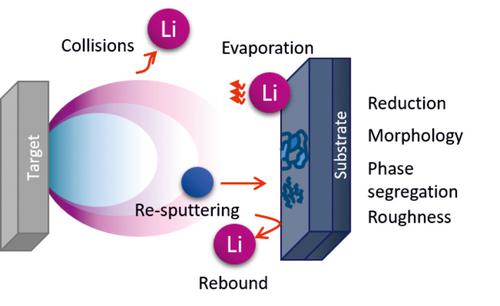当前位置:
X-MOL 学术
›
Helv. Chimica Acta
›
论文详情
Our official English website, www.x-mol.net, welcomes your feedback! (Note: you will need to create a separate account there.)
Pulsed Laser Deposition as a Tool for the Development of All Solid‐State Microbatteries
Helvetica Chimica Acta ( IF 1.8 ) Pub Date : 2020-12-24 , DOI: 10.1002/hlca.202000203 Luca Indrizzi 1, 2 , Natacha Ohannessian 1, 2 , Daniele Pergolesi 1, 3 , Thomas Lippert 1, 2, 4 , Elisa Gilardi 1, 3
Helvetica Chimica Acta ( IF 1.8 ) Pub Date : 2020-12-24 , DOI: 10.1002/hlca.202000203 Luca Indrizzi 1, 2 , Natacha Ohannessian 1, 2 , Daniele Pergolesi 1, 3 , Thomas Lippert 1, 2, 4 , Elisa Gilardi 1, 3
Affiliation

|
All‐solid‐state lithium ion batteries (LIB) are currently the most promising technology for next generation electrochemical energy storage. Many efforts have been devoted in the past years to improve performance and safety of these devices. Nevertheless, issues regarding chemical and mechanical stability of the different components still hinder substantial improvements. Pulsed laser deposition (PLD) has proved to be an outstanding technique for the deposition of thin films of materials of interest for the fabrication of LIB. Thanks to its versatility and possible fine tuning of the thin film properties, PLD promises to be a very powerful tool for the fabrication of model systems which would allow to study in detail material properties and mechanisms contributing to LIB degradation. Nevertheless, PLD presents difficulties in the deposition of LIB components, mainly due to the presence of elements with large difference of atomic mass in their chemical composition. In this review, we report the main challenges and solution strategies used for the deposition through PLD of complex oxides thin films for LIB.
中文翻译:

脉冲激光沉积作为开发所有固态微电池的工具
目前,全固态锂离子电池(LIB)是下一代电化学储能最有前途的技术。在过去的几年中,已经进行了许多努力来改善这些设备的性能和安全性。然而,关于不同部件的化学和机械稳定性的问题仍然阻碍实质性的改进。脉冲激光沉积(PLD)已被证明是用于制造LIB的目标材料薄膜沉积的杰出技术。由于其多功能性以及可能对薄膜特性的微调,PLD有望成为制造模型系统的强大工具,从而可以详细研究导致LIB降解的材料特性和机理。尽管如此,PLD在LIB组分的沉积方面存在困难,这主要是由于存在化学成分中原子质量差异较大的元素。在这篇综述中,我们报告了用于LIB的复杂氧化物薄膜通过PLD沉积的主要挑战和解决方案。
更新日期:2021-02-12
中文翻译:

脉冲激光沉积作为开发所有固态微电池的工具
目前,全固态锂离子电池(LIB)是下一代电化学储能最有前途的技术。在过去的几年中,已经进行了许多努力来改善这些设备的性能和安全性。然而,关于不同部件的化学和机械稳定性的问题仍然阻碍实质性的改进。脉冲激光沉积(PLD)已被证明是用于制造LIB的目标材料薄膜沉积的杰出技术。由于其多功能性以及可能对薄膜特性的微调,PLD有望成为制造模型系统的强大工具,从而可以详细研究导致LIB降解的材料特性和机理。尽管如此,PLD在LIB组分的沉积方面存在困难,这主要是由于存在化学成分中原子质量差异较大的元素。在这篇综述中,我们报告了用于LIB的复杂氧化物薄膜通过PLD沉积的主要挑战和解决方案。



























 京公网安备 11010802027423号
京公网安备 11010802027423号